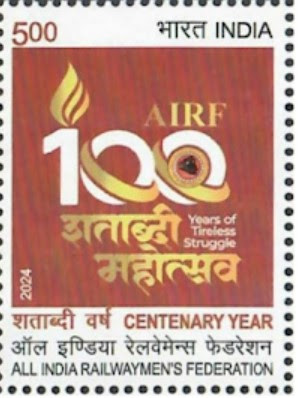Slovak post Pofis and Korean post have jointly issued a set of two stamps dedicated to the 20th anniversary of countries’ diplomatic relations and depicting national dance and chant traditions of both countries – Lucnica art ensemble (Slovakia) and Pansori epic chant (Korea).
The Lucnica art ensemble is a representative of this cultural heritage. With its activity, artistic craftsmanship and fantasy, inspired by folk tradition, it creates dance and music scenic images with professional art charge while at the same time maintaining the originality of own national culture. During the ensemble’s 65 years of history (first public appearances are dated as far as 1948) more than 2.500 young people, mostly university students, have become its members. Lucnica with its top-class art, beauty, youth and hot temperament has dazzled audience both at home and abroad. A dancing young Slovak couple dressed in a ceremonial folk costume from the Central Slovakia area of Podpolanie represents a motif of the stamp. It is a hand-embroidered folk costume, made by a special technique, so-called “crooked needle”. The folk costumes come from the dance “Zapocinka”.
Pansori is a Korean genre of musical storytelling performed by a vocalist and a drummer. This popular tradition, characterized by expressive singing, stylized speech, a repertory of narratives and gesture, embraces both elite and folk culture. During performances lasting up to eight hours, a male or female singer, accompanied by a single drum, improvises on texts that combine rural and erudite literary expressions. The term Pansori is derived from the Korean words pan, meaning “a place where many people gather”, and sori meaning “song”. Pansori originated in south-west Korea in the seventeenth century, probably as a new expression of the narrative songs of shamans.
Since November 7, 2003 Pansori is a part of the world cultural heritage UNESCO as “Masterpiece of the Oral Tradition and Intangible Heritage of Humanity”.
New stamps on Nature Reserve from Czech Republic
Karlstejn National Nature Reserve
This is the largest protected karst area in Bohemia. It stretches across an area of almost 16 km on the left bank of the Berounka River from Karlštejn and Mořina to Šanův kout and the valley of the Kačák rivulet near Sedlec. Rocky ravines and the Berounka canyon alternate here with rounded and rocky knolls or places of old karst plains.
Remains of fauna from the former sea have been preserved in the limestone and shale, particularly the well-known trilobites. The karst processes have created a complex of caves. The travertine caves at Saint John Under the Cliff are particularly unusual – although not open to the public, they are archelogically valuable. The reserve also contains abandoned quarries which provide a home to many protected or endangered species of plants and animals. The region belongs among one of the most attractive districts of the surroundings of Prague as well as all of Bohemia.
New stamps on Karlstejn National Nature Reserve will be issued on September 4th in the Czech Republic with above cancellations.
Courtesy : Mr.Slavomil Strnad,Semily, Czech Republic and Wolfgang Beyer, Vice Chairman of the German Philatelic Collector Group ARGE Zoologie.
email : Wolfgang.beyer1@aol.de Orders from philatelists for this issue are welcome.
Modern Pictorial meter cancellation from Germany
Modern METER featuring a scene of Evolution based on Darwin’s theory .The METER is from the Zoological Garden of the german town Rostock.
Courtesy : Mrs.Margitta Drohla, Rostock,Germany and Wolfgang Beyer, German Collector Group ARGE ZOOLOGIE. email : Wolfgang.beyer1@aol.de
My recent cover
Courtesy : Wolfgang Beyer - Germany


























.png)













No comments:
Post a Comment